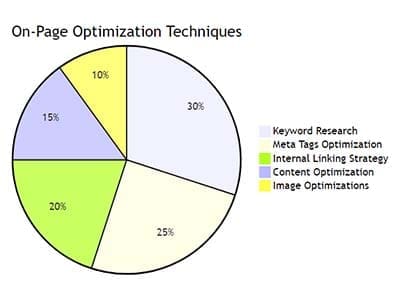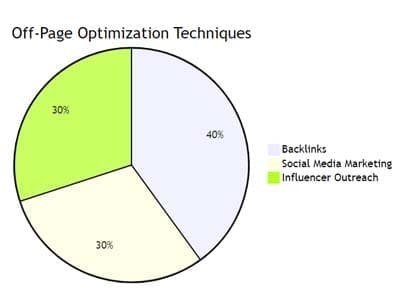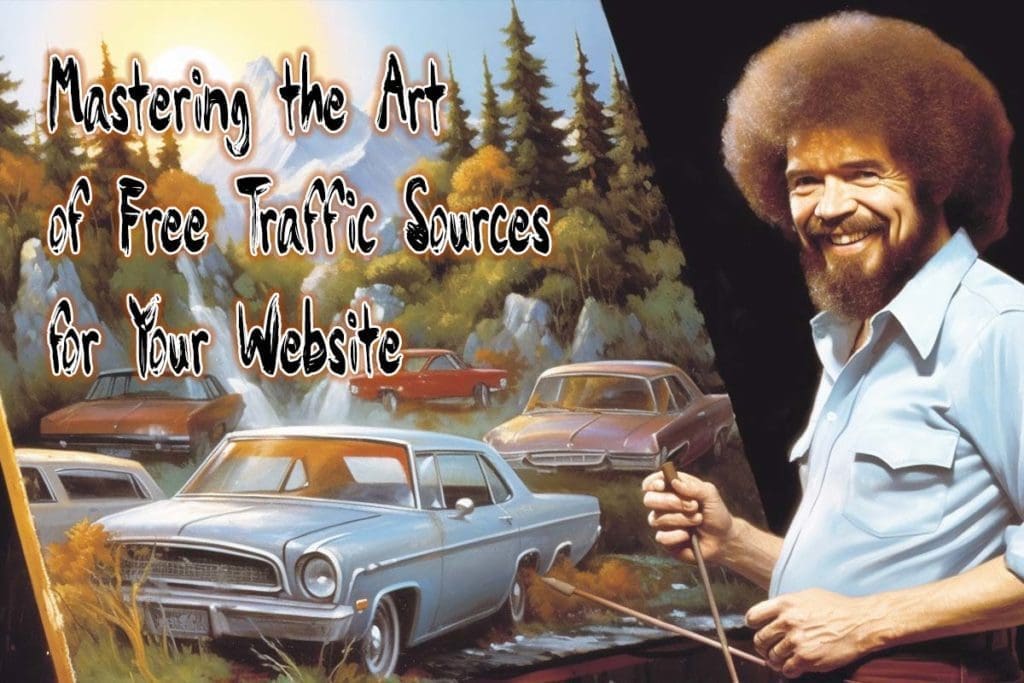Mastering the Art of Free Traffic Sources for Your Website
Every website owner dreams of having a website receiving thousands of visitors daily. However, the journey to get there is often long and difficult. One way to increase the number of visitors to your website is through traffic generation techniques.
Organic traffic is the most sought-after source of website traffic; understandably, it’s free! This article will discuss various free traffic sources you can leverage to drive organic traffic to your website.
Definition of Free Traffic Sources
Free Traffic Sources are platforms or channels allowing businesses and individuals to generate organic visits to their websites without spending money on advertising. These platforms could range from social media sites, content-sharing platforms, search engines, forums, groups, etc.
The Importance of Free Traffic Sources for Website Owners

Here’s a list of free traffic sources you can use to drive traffic to your site.
The importance of free traffic sources for website owners cannot be overemphasized. Organic search engine optimization (SEO) represents an excellent opportunity for businesses and individuals to promote their websites effectively while remaining cost-effective. By using free traffic sources as part of their marketing strategy, companies can drive more targeted visitors to their sites without spending a penny on paid advertising.
A well-rounded approach involving free sources such as social media marketing (SMM), content marketing, email marketing, and guest blogging will help in generating sustainable organic growth by increasing brand reputation, driving web page rankings higher up the search engine results page (SERP), highlighting thought leadership within an industry or niche, creating brand awareness which results in more leads and sales, growing email lists, etc. Therefore if you’re looking at building a long-term stable business online that generates stable monthly income, focusing on attracting organic/free visitors should be one key aspect you shouldn’t ignore.
Overview of the Article
In this article, we’ll take a look at some popular methods of generating free traffic sources that can help you build an audience for your website. First, we’ll discuss Search Engine Optimization (SEO) and the techniques you should use to optimize your website for search engines such as Google.
Second, we’ll explore social media marketing and examine the available platforms to promote your brand. Next, we’ll dive into content marketing and how it’s a potential goldmine for businesses looking to attract more visitors via search engines.
Moving on, we have email marketing which many entrepreneurs neglect but still yields impressive ROI if done correctly. We’ll cover email list-building techniques, creating effective campaigns, and crafting clear CTA’s (call-to-actions).
We will also discuss Forum Posting & Blog Commenting and how they can be leveraged to drive traffic back to your site by providing valuable insights into popular forums in your niche or industry while building relationships with other bloggers in your space. Now that we have given an overview of what’s coming up next let’s take a deep dive into each section!
Search Engine Optimization (SEO)
Search Engine Optimization or SEO is the process of optimizing your website to rank higher in search engine results pages (SERPs) for specific keywords and phrases. The benefits of SEO are numerous, including increased traffic to your website, improved brand visibility, and higher conversion rates. By implementing both on-page and off-page optimization techniques, you can improve your website’s search engine rankings and drive more organic traffic to your site.
On-page optimization techniques

Use on-page optimization methods to drive traffic and increase Google search results.
On-page optimization refers to optimizing individual web pages to rank higher in search engines and earn more relevant traffic from those searches. On-page optimization techniques include a variety of factors such as keyword research, meta tags optimization, internal linking strategy, and content optimization, including creating compelling headlines, sub-headers, and content structure by using proper HTML format for headings (H1 for the main title, H2 for subheadings and so on), image optimizations (including file names & alt text), etc.
The first step in on-page optimization is conducting thorough keyword research. You need to identify target keywords that your audience is actively searching for but have low competition from other websites.
Once you have identified these keywords, you can strategically place them throughout your content while keeping it natural-sounding. You will also want to optimize all aspects of meta tags like title tag (be sure to include target keyword), meta description tag (keep it under 155 characters), heading tags, etc., as they help search engines better understand what each page is about.
Off-page Optimization Techniques

Off-page optimization is a great way to promote your website or online store.
Off-page optimization refers to the activities that take place outside of the actual web page in order to improve its ranking on Google or other search engines. This includes improving link popularity through backlinks from reputable sites with high domain authority, social media marketing, and influencer outreach. One of the most effective off-page optimization techniques is building high-quality backlinks from other reputable websites.
Backlinks act as a vote of confidence to search engines that your website is authoritative and valuable. You can achieve this by reaching out to other websites in your industry and offering guest blogging opportunities or creating high-quality content that naturally earns backlinks.
Social media marketing is also an important off-page optimization technique. By sharing your website content on social media channels like Facebook, Twitter, Instagram, LinkedIn, etc., you can increase visibility and attract more visitors to your site.
Additionally, influencer outreach can help you build relationships with prominent figures in your industry who may be willing to share your content with their followers. By implementing both on-page and off-page optimization techniques for SEO purposes, you can improve your website’s search engine rankings for targeted keywords and phrases that drive relevant traffic to the site.
Social Media Marketing (SMM)

Social media marketing is a great way to get free traffic to your website or blog.
Social media has become an integral part of our daily lives, and it’s no surprise that businesses are also leveraging these platforms to reach their target audience. Social media marketing (SMM) involves using social media channels to promote a brand, product, or service. With over 3.6 billion active social media users worldwide, SMM can be a powerful tool for driving traffic to your website.
Overview of social media platforms and their users
To use SMM effectively, you need to understand the various social media platforms and their demographics. Facebook is the most popular platform, with over 2.5 billion monthly active users, and is particularly popular with baby boomers.
Instagram has over 1 billion monthly active users and is popular with millennials and Gen Zers who prefer visual content. Twitter has around 330 million monthly active users who prefer quick updates in real time.
LinkedIn is a platform for professionals with over 706 million members worldwide, making it ideal for B2B marketing. Pinterest is another visual platform that appeals mainly to women aged between 18-40 years old.
Techniques for increasing social media engagement
The key to success with SMM is engagement – the more people engage with your content, the more likely they are to visit your website. Here are some techniques you can use to increase engagement on social media:
- Use eye-catching visuals: Visuals like images or videos can help grab the attention of potential followers or customers scrolling through their feeds.
- Ask questions: Asking questions encourages followers to respond by leaving comments on your post.
- Host giveaways: Running a contest or giveaway can help increase engagement while rewarding loyal followers.
- Respond promptly: Responding promptly to comments on your posts shows that you care about your followers’ opinions and helps build trust in your brand.
Tips for creating shareable content
Creating shareable content is key to amplifying your reach on social media. Here are some tips to help you create shareable content:
- Keep it concise: Short, attention-grabbing captions perform better on social media platforms.
- Use storytelling: Telling stories that evoke emotions can make your content more relatable and shareable.
- Share user-generated content: Sharing your followers’ posts or reviews can help build trust in your brand while also encouraging them to engage with you more.
- Use hashtags: Using relevant hashtags can help potential customers find your brand and increase the reach of your posts.
Content Marketing

One of the most effective free traffic sources is with well-created content.
Definition and importance
Content marketing is the process of creating and sharing valuable, relevant, and consistent content to attract and retain a clearly defined audience and ultimately drive profitable customer action. It focuses on building trust with your audience by providing them with information that they find useful or entertaining.
In today’s digital world, content marketing has become essential for businesses to attract organic traffic to their website. The importance of content marketing lies in its ability to create brand awareness, generate leads, educate customers about products or services, improve search engine rankings, and increase website traffic.
Types of content
There are many types of content that can attract organic traffic to your website. Some popular types include blog posts, infographics, videos, whitepapers or e-books, case studies, podcasts, webinars, or live streams. Blogs are one of the most common forms of content marketing.
They allow you to share informative articles with your audience about topics related to your industry or niche. Infographics are another effective way to present complex data in an easy-to-understand visual format.
Videos are becoming increasingly popular as a type of content because they can be more engaging than written text alone. Whitepapers provide an opportunity for businesses to dive deeper into a topic related to their industry while showcasing their expertise.
Strategies for Promoting Content
Simply creating great content is not enough; you must also promote it effectively if you want it to reach a wider audience. One strategy is social media promotion, where you share your new blog post or video on various social media channels like Facebook, Twitter, etc., where your target audience hangs out online.
Another strategy is email outreach, where you can send an email newsletter with links back to your blog post or video promoting it among your subscribers. You can also collaborate with other influencers who have large audiences in the same niche to promote your content.
This strategy can help you reach a wider audience and build credibility through association with other respected experts in your industry. You can also use paid promotion strategies like Facebook Ads or Google AdWords to reach new audiences and get your content in front of the right people at the right time.
Email Marketing
Email marketing is one of the most effective ways to generate traffic and sales for your website. It is a cost-effective method and delivers a high return on investment (ROI). By creating an email list, you can keep in touch with your audience, build relationships and offer them valuable content.

Email is still among the best free website traffic methods.
Benefits and Importance of Email Marketing
Email marketing has several benefits, making it a vital part of any online business strategy. First, it helps to build brand awareness and trust among your target audience. By sending regular emails to your subscribers, you can demonstrate your expertise in your niche and establish yourself as an authority.
Secondly, email marketing helps to increase engagement with your audience. You can ask them for feedback, opinions, or suggestions, which will help you tailor your content to their needs.
In addition, it provides a platform to promote new products or services directly to people who have already shown interest in what you have to offer. Email marketing delivers traffic and generates sales.
You can include links to new blog posts or product pages in your emails, which will lead people back to your website. This consistent flow of traffic will help improve SEO rankings over time.
Techniques to Grow Your Email List Organically
One of the most challenging aspects of email marketing is growing an organic list of subscribers. However, there are several techniques that businesses can use:
- Offer something valuable: People are more likely to give their email addresses if they receive something in return, such as free e-books, webinars, or exclusive offers.
- Optimize pop-ups: Use exit-intent pop-ups that appear when visitors intend to leave the site; this increases conversion rates while avoiding annoying users while browsing.
- Optimize landing pages: Ensure that landing pages are designed well; they should be visually appealing with persuasive copywriting featuring clear calls-to-action.
- Promote email sign-up through social media: Share your email opt-in landing page on various social media platforms to reach a wider audience.
Tips for Crafting Effective Email Campaigns
Once you have built and grown your email list, creating effective campaigns that will engage your subscribers is important. Here are some tips:
- Personalize emails: Address subscribers by their first name and tailor the content based on their preferences and interests.
- Use attention-grabbing subject lines: This is the first thing that recipients will see in their inbox, so make sure the subject line is catchy and relevant.
- Keep emails concise: Focus on delivering valuable content while keeping the email short. Long emails full of text can be overwhelming for subscribers.
- Include a clear call-to-action (CTA): Every email should have a specific CTA; it could be visiting a new blog post or purchasing a product.
Make sure it stands out visually in the email. Email marketing is an important aspect of any successful online business strategy.
By building an organic list of subscribers, businesses can generate traffic and sales over time while building brand awareness and trust among their target audience. By following these techniques, businesses can grow their list efficiently while crafting effective campaigns that engage subscribers with valuable content.
Forum Posting & Blog Commenting
Forums have existed since the early days of the Internet, and they remain a valuable source of traffic today. By participating in forums that are related to your niche, you can build relationships with like-minded individuals, establish authority and credibility in your field, and send traffic to your site.
To start off, you need to find forums that are relevant to your niche. Make sure you join active communities where people regularly participate in discussions.
Once you find a few forums that meet these criteria, create a profile and start participating in discussions by providing valuable insights and answering questions related to your area of expertise. Blog commenting is another effective way to deliver traffic back to your website while building relationships with other bloggers in your niche.
When making blog comments, focus on providing thoughtful insights or asking meaningful questions related to the blog post content rather than simply leaving self-promotional messages. This will help you establish yourself as an authoritative voice within the community while also driving traffic back to your site.
Best practices for forum posting & blog commenting
When it comes to forum posting and blog commenting, there are a few best practices you should follow:
- Be genuine: Don’t try too hard to sell yourself or promote your website. Instead, focus on being helpful and adding value.
- Choose carefully: Not all forums or blogs are worth investing time in. Look for those that have engaged communities with relevant discussions.
- Read first: Before posting comments or starting new threads, ensure you’ve read what others have written to avoid duplicating content.
- Stay on topic: Keep all comments relevant by not straying too far from the context of the conversation at hand.
- Be helpful: The most successful posters are those who provide value through their responses, so make sure yours do just that.
Forum posting and blog commenting are valuable tools for sending you free website traffic while building relationships with others in your niche. By following the best practices outlined above, you will be able to establish yourself as an authority in your field and drive more organic traffic to your site.
Just remember that success requires patience and persistence, so don’t give up if you don’t see immediate results. Over time, you’ll find that these techniques can increase targeted traffic and improve your website’s search engine rankings.
Guest Blogging and Influencer Outreach

Add a weekly article on your website as an excellent free traffic source.
How guest blogging can help you reach new audiences
Guest blogging is a powerful strategy for building brand awareness and driving traffic to your website. It involves creating content for other blogs in your industry or niche to reach their audience and get them interested in what you have to offer.
By guest posting on relevant blogs, you can increase your visibility and establish yourself as an expert in your field. To start, identify high-quality blogs that are relevant to your industry or niche.
Look for sites that have an engaged community and a strong social media presence. Reach out to the blog owner or editor, expressing interest in submitting a guest post.
Research the blog’s guidelines before crafting a proposal so that you know what topics are allowed and what type of content they prefer. Once you’ve secured a spot as a guest blogger, be sure to create high-quality content that aligns with the host blog’s audience and goals.
Use this opportunity to showcase your expertise while providing value to readers. Include a bio at the end of each post with links back to your website or social media profiles.
How influencer outreach can help you build relationships
Influencer outreach is another strategy for expanding your reach and building relationships within your industry or niche. Influencers are individuals who have established credibility within their communities and can influence others’ opinions or buying decisions through their content or recommendations.
Identify key influencers in your industry using tools like Buzzsumo or Followerwonk. Once you’ve identified some potential influencers, start engaging with them on social media by sharing their posts or commenting on their updates.
When reaching out to influencers directly, be sure to personalize each message rather than send generic promotion requests. Provide value upfront by offering to share their content or collaborate on a project.
Building relationships with influencers takes time and effort but can pay off in the long run. By partnering with influencers, you can tap into their audience and gain exposure to new potential customers.
In Conclusion
Overall, free traffic sources are essential for website owners looking to increase their visibility and drive more traffic. While paid advertising can certainly be effective, many free options can help you achieve your goals without breaking the bank.
By implementing SEO, social media marketing, content marketing, email marketing, forum posting & blog commenting, guest blogging & influencer outreach strategies, you can build a comprehensive and sustainable approach to sending traffic that aligns with your brand goals. Remember: building an engaged audience takes time and effort.
But by creating high-quality content and consistently promoting it through these channels, you’ll begin to see results over time. By nurturing relationships within your industry or niche and providing value upfront – you’ll create a strong foundation for growth that will continue to benefit your business for years to come.
FAQs
Q: What are the best free traffic sources for my website?
A: The best free traffic sources for your website includes Google search, social media sites like Facebook, Twitter, and LinkedIn, influencer marketing, email lists, and link back to your website from other websites.
Q: How can I get free traffic to my website?
A: You can get free traffic to your website by optimizing your website for SEO, creating quality content that is shareable, using social media sites, and engaging with your audience on various platforms.
Q: What are some traffic sources for my online store?
A: Some traffic sources for your online store includes SEO optimization, social media marketing, email campaigns, influencer marketing, and paid advertising on targeted platforms.
Q: How can I choose the best free traffic source for my website?
A: To choose the best free traffic source for your website, you need to understand your target audience, analyze the amount of traffic you are receiving from each source, track your website’s analytics, and experiment with different sources to see which generates the most traffic.
Q: How can I drive free traffic to my website as an affiliate marketer?
A: You can drive free traffic to your website as an affiliate marketer by creating quality content, utilizing social media platforms, using influencer marketing, and building organic search traffic.
Q: What is the best way to gain traffic to my website?
A: The best way to gain traffic to your website is by creating quality content, optimizing it for search engines, engaging with your audience on social media, using email campaigns, and building organic traffic through influencer marketing and backlinks.
Q: What is a source of free traffic?
A: A source of free traffic includes social media, search engine optimization, backlinks, email lists, and influencer marketing.
Q: What are some free traffic sources for affiliate marketing?
A: Some free traffic sources for affiliate marketing includes social media platforms, email lists, creating quality content, using influencer marketing, and building organic search traffic.
Q: How can I drive traffic to my affiliate website?
A: You can drive traffic to your affiliate website by creating quality content, optimizing it for search engines, promoting it on social media, using email campaigns, engaging with your audience, and building organic search traffic through backlinks and influencer marketing.
Q: What is the difference between free and paid traffic sources?
A: Free traffic sources are those that do not require any financial investment, while paid traffic sources require a monetary investment. Free traffic sources include optimizing your website for search engines, utilizing social media platforms, and building organic search traffic. Paid traffic sources include pay-per-click advertising and social media advertising.


